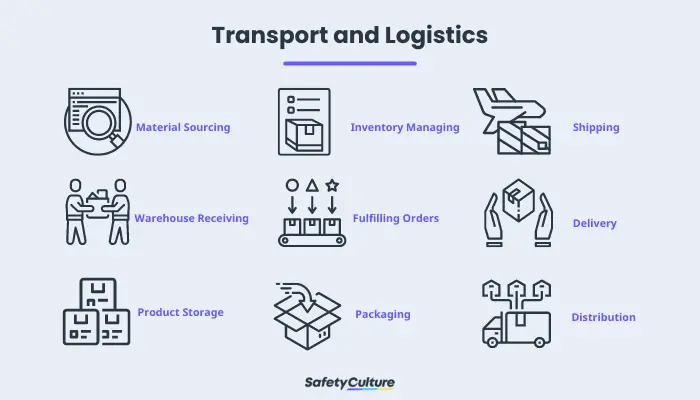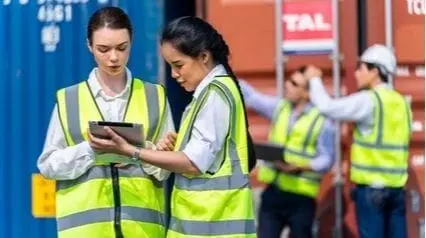What is Transport and Logistics?
Transport and logistics is a collection of processes involved in the production, storage, inventory, delivery, and distribution of specific goods or services. Sometimes referred to as transportation and logistics, it is an integral element of the whole supply chain and it involves proactive procedures to safely and efficiently move products from the manufacturers, to the sellers, and up to the end users or the consumers.
The primary goal of managing transport and logistics—especially for businesses and those in cargo consolidation—is to properly oversee the flow of supply from point A to point B, and for customers to receive products on time, damage-free, and according to expectations.
The logistics industry is responsible for moving products domestically and internationally and is therefore a huge contributor to economic development. According to a report released by Allied Market Research, the transport and logistics market is projected to grow at $12,975.64 billion by the year of 2027.
Importance
Companies utilize transportation and logistics for various reasons and optimizing them offers significant advantages not just for the company but for the supply chain in general. Transport and logistics’ main role can also vary per business, but its importance and benefits generally include the following:
- Increases efficiency – Just like any other business practice that aims to simplify processes, optimizing transportation and logistics increases operational efficiency. Actively tracking the movement of products helps spot errors and discrepancies in the supply which in turn enables businesses to address them proactively.
- Lowers costs – Managing transport and logistics properly provides better visibility in the supply chain. This allows businesses to avoid unnecessary purchases, eliminate unproductive activities, implement recognized areas for improvement, and overall manage costs better.
- Improves production turn out – An optimized transport and logistics process helps streamline operations, reduce downtime, and generally improve business performance.
- Enhances inventory management – Greater supply chain visibility prevents material stockout and material overstock, avoids damages in products, and enables businesses to manage inventory more efficiently.
- Prevents disruption in the supply chain – As an integral unit of the supply chain, an organized transport and logistics system helps spot inefficiencies in the process. It also enables companies to address issues before they cause disruption and significantly affect business operations.
To summarize, when executed properly, an optimized transport and logistics system can improve customer experience and give businesses stronger industry reputation.
What is the Difference Between Transport and Logistics?
Steps involved in the transportation and logistics may vary based on the industry the business is in and according to the actual product they produce. “Transportation” and “logistics” are also often used interchangeably, but what really is the main difference between transport and logistics?
Transportation
As the name suggests, transportation is the operation involved in the actual physical delivery or movement of products from one place to another. It’s part of the larger system of logistics and considers factors such as secured item packaging, best delivery route, and the most appropriate mode of transport. Its functions are further divided into three areas that businesses must observe to ensure effective logistics operations:
- Operations management – or the organization of processes involved in making goods and delivering services
- Vehicle and fleet management – or the coordination of delivery vehicles to ensure optimum and efficient use of resources
- Infrastructure administration – or securing all infrastructures involved in the logistics process such as roads, ports, airports, canals, rails, and pipeline networks, among others
Logistics
Logistics is a bigger business unit which refers to the procedures involved in the supply chain that intend to safely and timely deliver goods and services to consumers. Aside from transportation, the following processes can be considered under the umbrella of logistics:

Transport and Logistics
- material sourcing
- warehouse receiving
- product storage
- inventory managing
- fulfilling orders
- packaging
- shipping
- delivery
- distribution
Create Your Own Transport and Logistics Checklist
Eliminate manual tasks and streamline your operations.
Get started for FREETop Challenges
Diverse industries encounter significant challenges for various reasons and the sector of transport and logistics also face them. Based on the report released by the International Finance Corporation (IFC), both small-to-medium and large logistics companies experienced setbacks caused by the Covid-19 pandemic. Other challenges faced by the industry include:
Rising fuel prices
Although there can be several reasons for rising fuel prices, the most prominent as of the moment is the current conflict that has now impacted one of the largest oil producers. The effect is felt rather instantly on an international scale. Seasonal changes, global issues, and conflicts between major oil and gas producers significantly affect the transportation and logistics industry that is responsible for the flow of products and goods worldwide.
Driver shortages
According to a report released by the American Trucking Association, the United States experienced a historic increase of 80,000 truck driver shortage in 2021. Aside from the pandemic and from the profession itself being a demanding job, a New York Times article also revealed that stress and loneliness are major reasons for the reduced numbers of truck drivers on the road.
To combat the ongoing driver shortage, Representatives in the US Congress introduced a bipartisan bill titled “Strengthening Supply Chains Through Truck Driver Incentives Act,” that aims to attract and retain new drivers through a set of short-term, fast, and straightforward incentives.
Meeting customer satisfaction
Big retail services drastically changed the way customers experience product delivery in the last few years. As a result, the transportation and logistics industry needs to keep up with various consumer expectations such as fast delivery, easy tracking, and direct communication with delivery drivers.
This can pose a visible impact if processes are not modified to be at par with customer demands.
Sustainability concerns
It is revealed that a growing number of consumers prefer purchasing from companies that are actively engaging in sustainable practices. Integrating potential reduction of greenhouse gas and carbon emission is also becoming a priority to businesses.
The transportation and logistics industry can implement various strategies to observe business sustainability such as utilizing alternative fuels, replacing engines for better performance, or tracking and properly reporting emissions. This entails financial commitment as it can be costly at first, but it also offers endless growth opportunities in the long run toward sustainable logistics.
Aside from implementing the best industry practices, transportation and logistics companies can also utilize tools that can help monitor, track, and inspect processes to ensure that every step in the operation is done efficiently and effectively.




